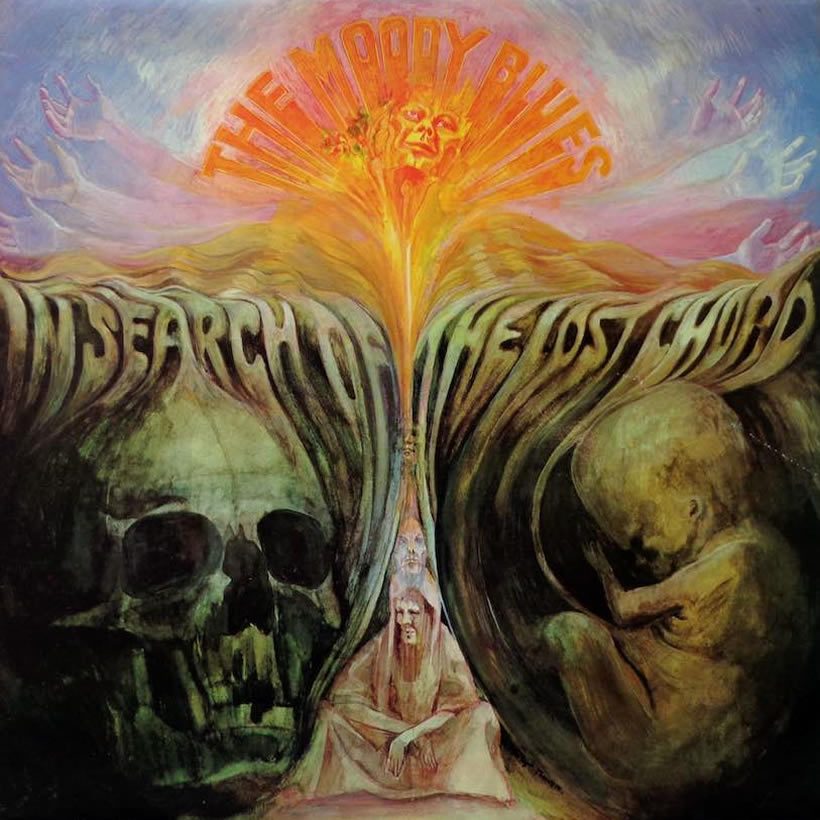‘In Search Of The Lost Chord’: A Mystical Landmark For The Moody Blues
The group’s 1968 album provided the real commercial breakthrough for their new album-oriented sound.

The 1967 landmark Days Of Future Passed rightly came to be regarded as such a seminal record in Moody Blues history, that some might be surprised to find it only ever reached No.27 in the UK chart. It was the group’s next release, In Search Of The Lost Chord, that provided the real commercial breakthrough for their new album-oriented sound.
‘Interesting Eastern sounds and chants’
Released on July 26, 1968, the Lost Chord album has taken an important place among recordings of the period that were the building blocks for what we now know as prog. Bill Martin, in his 1998 book Listening To The Future: The Time of Progressive Rock 1968-1978, observed that the album “introduced some interesting Eastern sounds and chants. ‘Voices In The Sky’ is enchanting, and the group could also pull off a powerful guitar rocker every now and then, such as the romping ‘Ride My See Saw.’”
In February 1968, the Moodies had reached No.19 on the UK chart with the initial release of “Nights In White Satin,” later to become a Top 10 hit around Christmas 1972 and a perennial favorite. But its first appearance certainly helped create anticipation for the freshly-refocused group’s new long player.
‘A trip of musical exploration’
The group were also seizing the potential of the album format in terms of creative expression. In a Melody Maker feature headlined “The Five Wise Men Of Pop,” that October, Mike Pinder mused: “Albums give us a chance to experiment with new ideas. And buyers realize they offer more than just music to dance to. They can sit down and listen – get away on a trip of musical exploration.”
Listen to the best of the Moody Blues on Apple Music and Spotify.
Lost Chord entered the UK countdown at a relatively tentative No.31 on August 3, as the Small Faces were coming to the end of a six-week reign with their classic Ogdens Nut Gone Flake album. A week later, Lost Chord was No.16, then hit the Top 10 for the first time at No.7. It peaked at No.5 in September and was a steady seller as the Moodies built their distinguished catalog of album releases, making a final top 40 appearance as late as 1972.
With In Search Of The Lost Chord, the Moody Blues would develop the momentum that took them on the epic, worldwide adventure that continues to this day. As bassist-songwriter John Lodge said around the release of his 2015 solo album 10,000 Light Years Ago: “In the Moodies, as soon as you’d written a song and played it to the rest of the guys, it became their song, which was beautiful for me because I wanted everyone to play what they believed was the right thing for that song.”
Buy or stream In Search Of The Lost Chord.













Steve Gale
August 4, 2015 at 9:50 pm
An excellent album which was remastered by Justin Hayward in 2008 and the CD issued with bonus tracks. Surprisingly despite obvious high sales none of the Moodies 60’s / 70’s albums gained any UK certified sales awards yet the 2008 CD release of On The Threshold Of A Dream gained Silver Certification.
The Moodies have just completed a first class UK tour, sadly no venues in Scotland, and thanks to the wisdom of the BBC none of their Glastonbury concert was recorded Adding insult to injury even Justin Hayward’s Glastonbury solo performance of Nights In White Satin seems to have been taken down from the BBC Moodies web page.
Richard Marquez
April 26, 2018 at 1:27 pm
So good to see them in the Rock Hall of Fame! their albums are timeless and priceless!
Greg Wieting
March 25, 2022 at 10:27 pm
Funny about that last quote, when I saw them in the late ’80’s at Nassau Coliseum they seemed quite bored with each others songs. For every song whomever didn’t write the song would just go through the motions while the singer/songwriter would be full of joy. When it was someone else’s turn the previous performer’s face would melt back to boredom while the new player’s would light up.